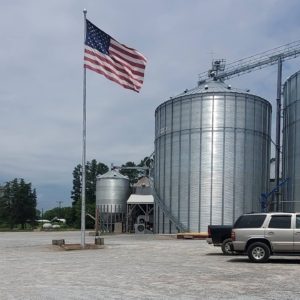Calculating our footprint

We launched Riverbend in 2010 with the intent of building a more sustainable supply chain for craft beer and spirits production. The first page of our website included a declaration of support for our local farmers and the planet. We pledged to pay living wages to our farmers for their grain and have made good on those promises year after year.
In honor of Earth Day/Month, we thought we’d take a deeper dive into the environmental impact of sourcing grain from our local grainshed. Back then, we spoke a lot about food miles…the amount of miles an item travels between where it is grown and where it is consumed. That language is still relevant today. We average about 300 miles between our growers and our malt house. Almost all of our products are sold back into this same footprint.
The footprint analysis looks much different for large-scale producers around the globe. For the sake of simplicity, I’ve chosen to stay within the United States and compare the impact of using Wyoming grown barley to our supply chain.
Northern Wyoming to Malt House to Asheville = 1,978 miles
Assuming 6 miles per gallon via 18-wheeler, this trip generates 7,378 pounds of carbon emissions per 44,000 lb. truckload.
Farm to Riverbend average = 300 miles
Assuming 6 miles per gallon via 18-wheeler, this trip generates 1,119 pounds of carbon emissions per 44,000 lb. truckload.
Based on our current production, we’ll handle 70 to 80 truckloads of grain this year. These efforts will result in a net reduction of 230 tons of carbon emissions per year.
These types of reductions are happening because our customers are choosing to support local, family-owned farms.
Can we do better….absolutely! We are currently conducting an energy audit of our facility to improve efficiency. After that we’ll dig deep into water use and see what can be done to reduce our consumption on that front.
